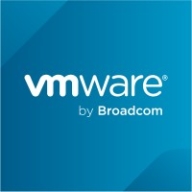

OpenText Recover and VMware Live Recovery are competing products in the field of data protection and recovery. OpenText has the upper hand in customer support and scalability, whereas VMware is notable for its robust features and comprehensive capabilities.
Features: OpenText Recover provides efficient backup capabilities, strong data protection policies, and comprehensive data management. VMware Live Recovery is recognized for extensive recovery options, real-time data recovery, and a focus on minimizing downtime through flexible and instantaneous restoration.
Ease of Deployment and Customer Service: OpenText Recover offers a straightforward deployment process and ensures efficient implementation with strong post-deployment support and responsive customer service. VMware Live Recovery has a flexible deployment model and is supported by comprehensive documentation and resource availability, providing excellent overall support.
Pricing and ROI: OpenText Recover is seen as cost-effective with a quick ROI due to competitive pricing and overall performance. VMware Live Recovery requires a higher initial investment but offers a more extensive feature set, which may lead to a higher long-term ROI. OpenText appeals to cost-conscious buyers, while VMware attracts those prioritizing feature richness and long-term benefits.
| Product | Market Share (%) |
|---|---|
| VMware Live Recovery | 7.2% |
| OpenText Recover | 0.3% |
| Other | 92.5% |


| Company Size | Count |
|---|---|
| Small Business | 36 |
| Midsize Enterprise | 12 |
| Large Enterprise | 39 |
OpenText Recover offers businesses a robust data protection solution, ensuring continuity and data recovery across key infrastructures.
With OpenText Recover, organizations are empowered with reliable recovery measures that protect mission-critical data, featuring seamless integration across various platforms. The technology aligns with industry's best practices, delivering comprehensive safeguards that enhance resilience.
What are the key features of OpenText Recover?OpenText Recover is widely implemented across industries like finance, healthcare, and telecommunications. It supports data integrity and swift recovery in financial systems, ensures patient data is safeguarded in healthcare, and helps telecom providers maintain uninterrupted services. The diverse applications make it a versatile tool in maintaining critical operations.
We monitor all Disaster Recovery (DR) Software reviews to prevent fraudulent reviews and keep review quality high. We do not post reviews by company employees or direct competitors. We validate each review for authenticity via cross-reference with LinkedIn, and personal follow-up with the reviewer when necessary.